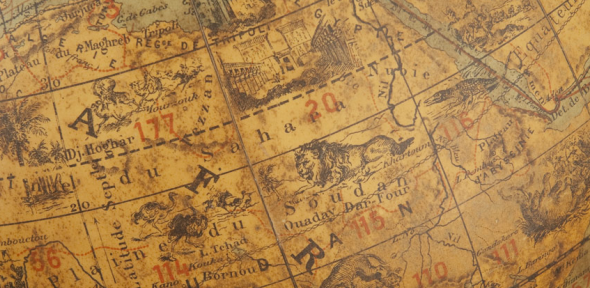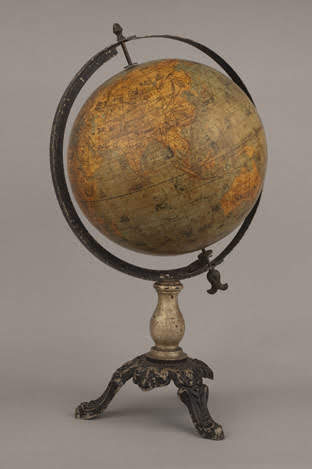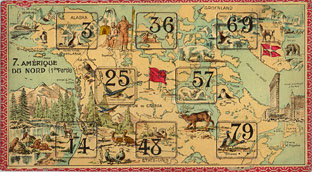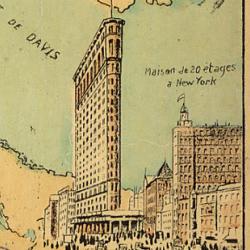The cards are hand-coloured and each has 8 numbered tiles that can be lifted out to reveal a black and white image of a significant feature of the region, often an animal or plant (Image 2). Where the same animal is shown on different cards the creature is generally depicted in a different pose, suggesting that the manufacturer was happy to spend money on producing a new image. Detail is also impressive on the globe itself - many of the squares are numbered, some of which correspond to those on the game cards. Geographical features including Tropics, isotherms and regional seasonal winds are shown, as are man-made features such as prominent buildings.
The level of detail and the hand colouring suggest that this was an expensive toy, either for the child of a wealthy family or perhaps for a schoolroom, where a larger group could have made full use of the 12 cards.







